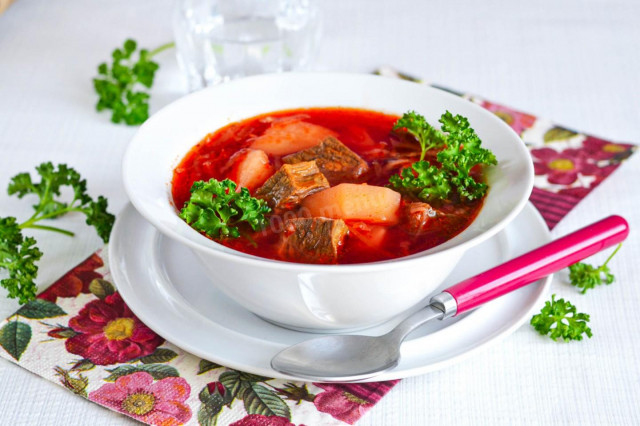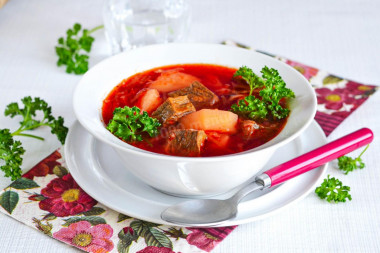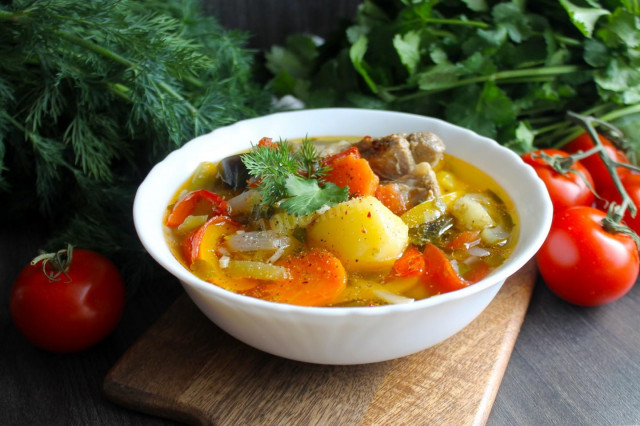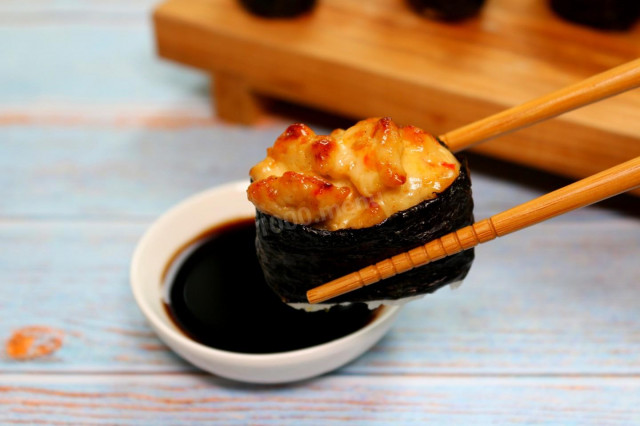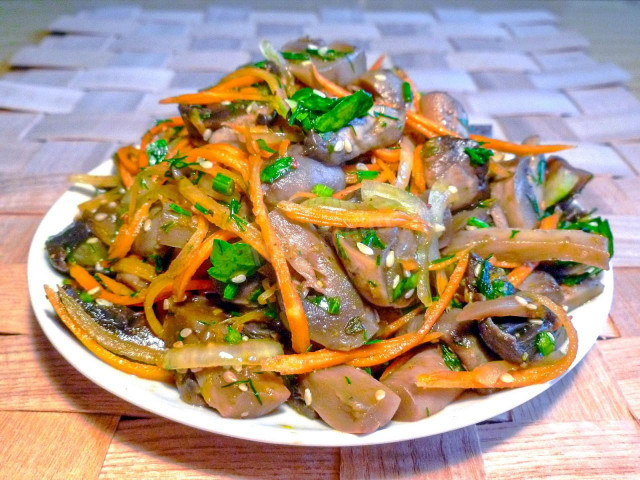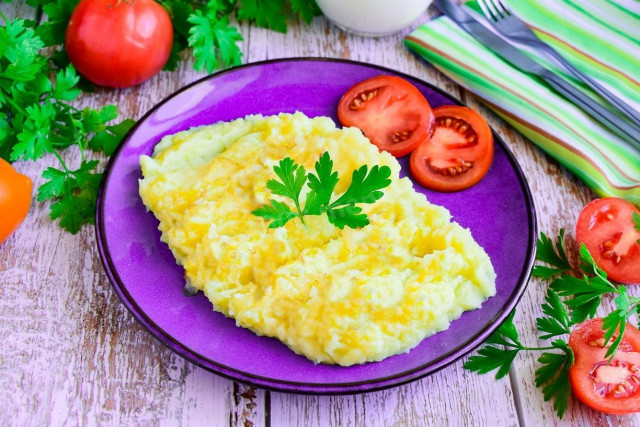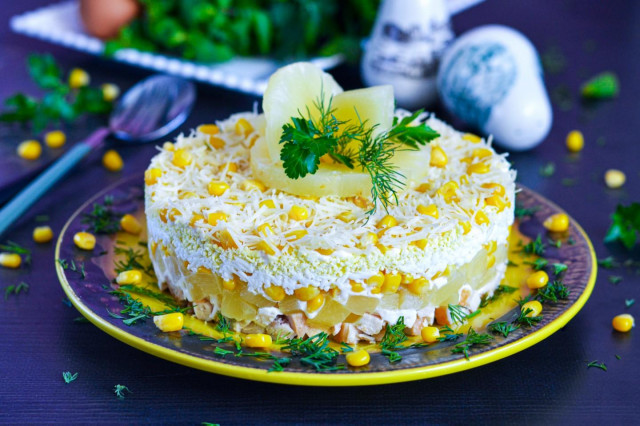Composition / ingredients
Step-by-step cooking
Step 1:
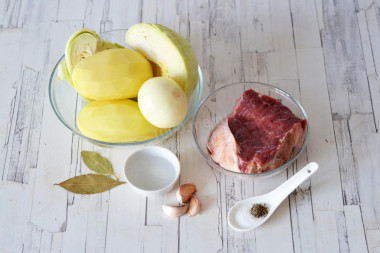
How to cook a classic borscht with beef? Prepare all the necessary ingredients for the borscht. For a more rich broth, it is better to take beef on the bones. Wash and peel the potatoes well. To prevent the tubers from darkening, fill them with water while the broth is cooking.
Step 2:
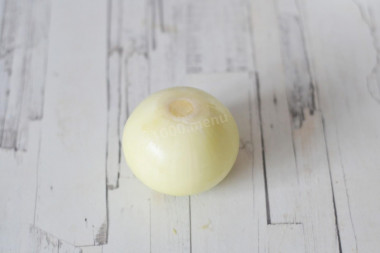
Peel the onion. I use the whole onion and throw it away at the very end of cooking. But in general, onions are added to borscht in a roast with beets and carrots. It needs to be cut into small cubes. And you can use two onions at once - one for broth, and the second for frying.
Step 3:
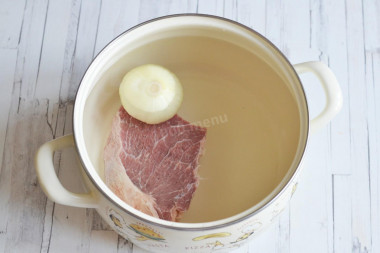
Wash the beef and put it in a saucepan along with the whole onion (if you do not add the onion to the roast). Pour in the water and put the pan on medium heat. Bring to a boil and cook over medium heat until the meat is ready for about one hour, removing the foam. The cooking time will depend on what size piece of meat you have, what part of the carcass it is and the age of the animal.
Step 4:
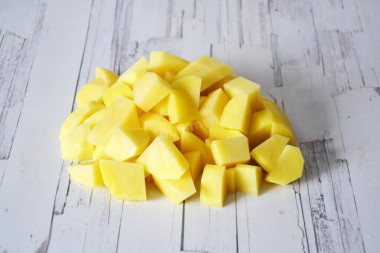
While the broth is cooking, cut the potatoes into medium cubes.
Step 5:
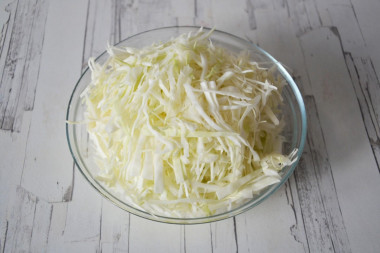
Remove the cabbage head from the uppermost leaves, cut out the stalk. Finely chop the cabbage.
Step 6:
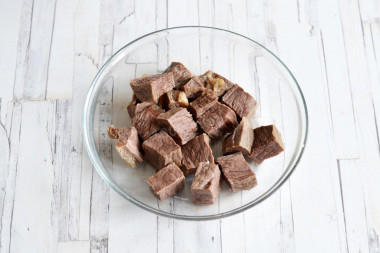
Remove the meat from the broth, cool and cut into small pieces.
Step 7:
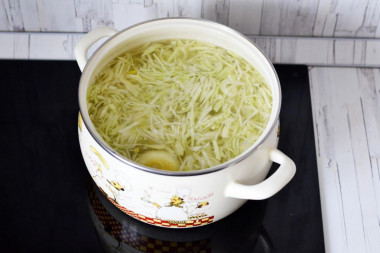
Add chopped cabbage and potatoes to the broth. Bring the broth to a boil and cook over medium heat for 10-15 minutes.
Step 8:
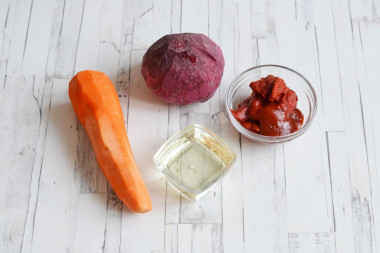
Prepare the necessary ingredients for frying. How to make a roast? Prepare the products for her. Wash the beets and carrots and peel them. Tomato paste can be replaced with ketchup or 1-2 fresh tomatoes. If you use fresh tomatoes, then remove the skin from them. To do this, cut them cross by cross, scald them with boiling water, and then put them in cold water. After that, the skin will be very easy to remove. Then grate the pulp on a fine grater.
Step 9:
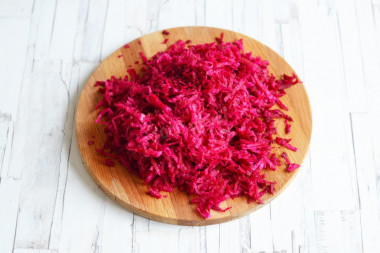
Grate the beetroot on a coarse grater.
Step 10:
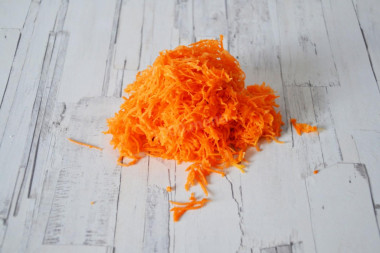
Also grate the carrots on a coarse grater.
Step 11:
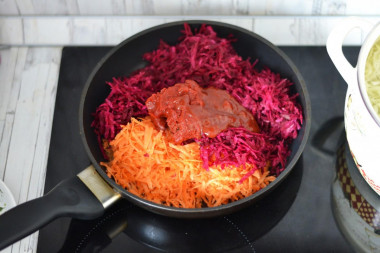
Heat vegetable oil in a frying pan over low heat. Put the carrots, beets and tomato paste. If you use onions in frying, you need to add it along with all the vegetables.
Step 12:
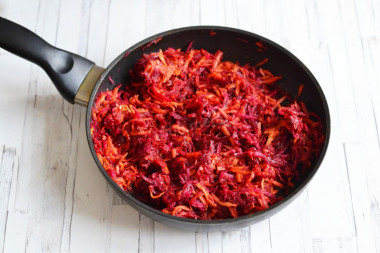
Simmer the roast on low heat for 5-7 minutes, stirring.
Step 13:
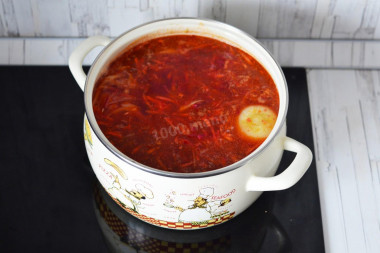
Put the roast in a saucepan and stir. Borscht will immediately acquire a bright ruby color. The key to a beautiful bright red color of borscht is in the color of the beet itself, as well as in the cooking time. If the beetroot is stewed for a long time, and then boiled, it becomes transparent, and borscht acquires a pale red color. The proportions of beetroot and water are also important: if there is a lot of water, and the beetroot is small, then it will not be enough to properly paint over the entire broth.
Step 14:
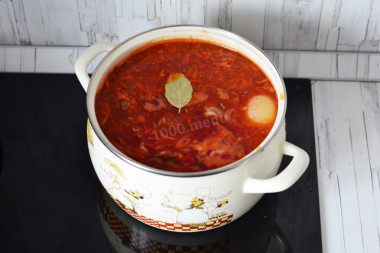
Return the beef to the pan. Pour in the vinegar. Vinegar can be replaced with the juice of 1/2 lemon or 1/2 tsp citric acid. In any case, it is necessary to add some kind of acid to the borscht: so its bright color is preserved and the borscht itself acquires a slight sourness. Add the bay leaves, salt and pepper. Stir again and cook until the vegetables are ready for about 10-15 minutes.
Step 15:
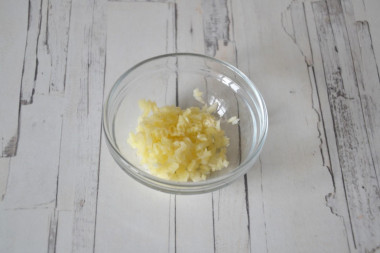
Peel the garlic cloves and pass them through the press.
Step 16:
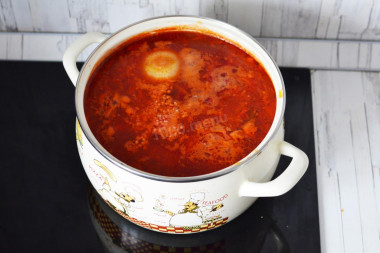
Season the borscht with chopped garlic and remove the pan from the heat. I usually leave the pan on the cooling burner.
Step 17:
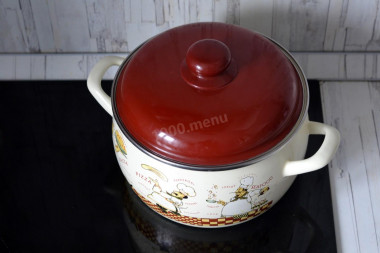
Cover the pan with a lid and let the borscht brew for 10-15 minutes. Then pour on plates and serve with sour cream and black bread. Bon appetit!
Important! Regardless of whether the amount of water for soup is indicated in the recipe or not, it is best to focus on your own preferences (thick or more liquid soup you like), as well as on the size of your pan and the products taken for cooking. Do not forget that the author has his own view on the amount of meat, potatoes, cereals and other ingredients in the soup, which may not coincide with yours. In practice, this means that if you are cooking for the first time, you should not cook a whole pot at once. Make a soup for tasting - for one or two people. To do this, reduce the amount of all ingredients according to the recipe to 1-2 servings, and take the amount of water from the calculation: from one cup per serving - if the soup is very thick, to 1.5-2 cups - if more liquid. Do not forget to take into account that part of the liquid will boil off during the cooking process. After tasting a small portion of soup, you can adjust both the amount of liquid and the proportions of ingredients to your taste. In the future, like most experienced housewives, you will be able to pour water for soup and lay the ingredients “by eye".
Root vegetables are best washed with a brush or a hard sponge under running water.
For cooking, it is better to use filtered or bottled water that is neutral to taste. If you use tap water, keep in mind that it can give the dish an unpleasant characteristic taste.
Calorie content of the products possible in the composition of the dish
- Onion - 41 kcal/100g
- Ripe potatoes - 80 kcal/100g
- Baked potatoes - 70 kcal/100g
- Mashed potatoes - 380 kcal/100g
- Boiled potatoes - 82 kcal/100g
- Potatoes in uniform - 74 kcal/100g
- Fried potatoes - 192 kcal/100g
- Green cabbage - 46 kcal/100g
- Fresh frozen green cabbage in a package - 45 kcal/100g
- Melted beef fat - 871 kcal/100g
- Fat beef - 171 kcal/100g
- Lean beef - 158 kcal/100g
- Beef brisket - 217 kcal/100g
- Beef - okovalok - 380 kcal/100g
- Beef - lean roast - 200 kcal/100g
- Beef shoulder - 137 kcal/100g
- Beef - ribs - 233 kcal/100g
- Beef - ham - 104 kcal/100g
- Beef - tail - 184 kcal/100g
- Boiled ham - 269 kcal/100g
- Beef corned beef - 216 kcal/100g
- Beetroot - 40 kcal/100g
- Dried beetroot - 278 kcal/100g
- Boiled beets - 49 kcal/100g
- Carrots - 33 kcal/100g
- Dried carrots - 275 kcal/100g
- Boiled carrots - 25 kcal/100g
- Garlic - 143 kcal/100g
- Bay leaf - 313 kcal/100g
- Ground black pepper - 255 kcal/100g
- Wine vinegar (3%) - 9 kcal/100g
- Vinegar 9% - 11 kcal/100g
- Balsamic vinegar - 88 kcal/100g
- Apple vinegar - 14 kcal/100g
- Vinegar - 11 kcal/100g
- Vegetable oil - 873 kcal/100g
- Tomato paste - 28 kcal/100g
- Salt - 0 kcal/100g
- Water - 0 kcal/100g

